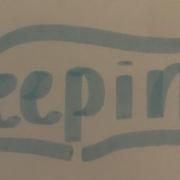
The new exhibition of the classical myth (and reality) of the story of Troy proves how a 3,000 year gap is meaningless when it comes to raw human experience. The story of Troy deals with themes of Love, War and their intermingling, subjects at the forefront of daily life more than ever with the recent assassination of Soleimani. The heroes of this story, namely Achilles, Odysseus, Patroclus, Hector and Helen amongst others deal with these emotions outwardly, displaying through descriptions by poets such as Homer and painters such as Fuseli feelings that many can still relate to today. Overall, this was an informative and moving exhibition that served to really accentuate this continuation of humanity over time, an experience I would not recommend missing.
Starting with an outline of the events that cause and drive the 10 year Trojan War, the exhibition overviews key moments such as the ‘judgement of Paris’, in which he titles the goddess Aphrodite as the ‘most beautiful’ out of Athena and Hera in return for her promising him the love of the most beautiful woman, Helen of Greece who is currently married to King Menelaus of Sparta. Paris returns from a state visit to Sparta with Helen to keep her as his wife in the holy city of Troy. Agamemnon, brother to Menelaus and leader of the united Greek army orders the pursuit and return of Helen, having to start this journey with the sacrifice of his daughter Iphigenia to Artemis to appease her and allow his ships to have enough wind to reach Troy. Once arrived, the bloody ten year battle to return Helen starts, however, the most important events of the last 51 days are famously recounted in the Iliad. Achilles, the greatest of the Greek warriors, son of the goddess Thetis could only be killed by an injury to his ankle. He sulks in his tent after Agamemnon steals his war-prize woman Briseis, whom he grew to love, and was only stirred back into action once he heard of his dear friend Patroclus’ death at the hand of the Trojan hero Hector. Achilles grieves heavily for his friend and potential lover, avenging him by killing Hector and dragging his body behind a chariot around the walls of Troy for 12 days, an act despised by the gods who prevent any damage from coming to Hector’s body. Achilles is eventually killed by Paris, with an arrow to the ankle and the war comes to an end with Greek victory with the involvement of the Trojan Horse, an event which Priam’s daughter Cassandra warned against but was ignored. Helen is returned to Menelaus who decides not to kill her once confronted with her extreme beauty, and Troy lies in ruins.
Zeus is said to have been the catalyst of this catastrophic war, as quoted from Cyprus in around 625-600 BC, ‘in his complex mind Zeus resolved to relieve the all-nurturing earth of mankind’s weight by fanning the great conflict of the Trojan War’. With the world’s population expected to reach 10 billion by 2050, we can come to question the nature of war, and whether its seemingly thoughtless and stupid events can only be justified by an innate desire for destruction that the ancient Greeks saw as having been planted by Zeus, as its senselessness is so incompatible with the possibility for rational human logic.
The women of the Trojan War also had their own story to tell, as do women of war today. Yet, over the millennia, the issue has often been the disregard for women’s voices. Helen is often depicted as unwilling to leave Menelaus, and in Eleanor Antin’s humorous version of ‘The Judgement of Paris’, we see a ‘dark, broody’ Helen ‘thoroughly annoyed at being treated like an object’. In Aeschylus’ Agamemnon play of 458BC, she is described as ‘Helen, destroyer of ships, destroyer of men, destroyer of cities’. This puts Helen in an active role in the downfall of these men, which is ridiculously misogynistic considering Helen’s reluctant passivity at the hands of men she knows she cannot disobey, especially considering the deities involved. The underestimation of women is shown through Cassandra, Priam’s daughter who is utterly ignored when she, a priestess, receives an omen warning the Trojan Horse is a trap. The deliberate silencing of female narratives was mirrored in a modern clip of Syrian refugee women who were acting out relevant parts of ‘Agamemnon’ and being given a platform through the screen to share their experiences to reverse the perverse tradition of only projecting men’s voices.
Ancient and modern warfare and its effects were also paralleled. The inevitable grief and loss that comes with war was depicted through Henry Fuseli’s ‘Achilles lamenting for Patroclus’. The painting was partnered with a clip of a veteran describing his experiences with PTSD, and a description with the painting stating ‘poets and artists in Fuseli’s time greatly admired the heroes of Ancient Greece for expressing authentic emotion’. The painting shows Achilles contorted with grief over the body of his friend and lover, and the extent of his agony is hinted at in the veteran’s recounting of his experiences, only that he felt he had to suppress his. The ideas concerning the expression of authentic emotion relate to the modern discussion surrounding ‘toxic masculinity’, in which some societal constructs have told men that to show emotion is to reveal weakness, as this may make them seem more ‘feminine’ as women are stereotyped to be more emotional in a society that views women as weaker. To show the larger than life, unimaginably strong and brave warrior heroes of Ancient Greece so disfigured by emotion must be comforting to some men of today who still feel trapped in a desire to express utmost masculinity.
To see such modern issues echoed in the ancient world is fascinating, and well worth a visit.



























